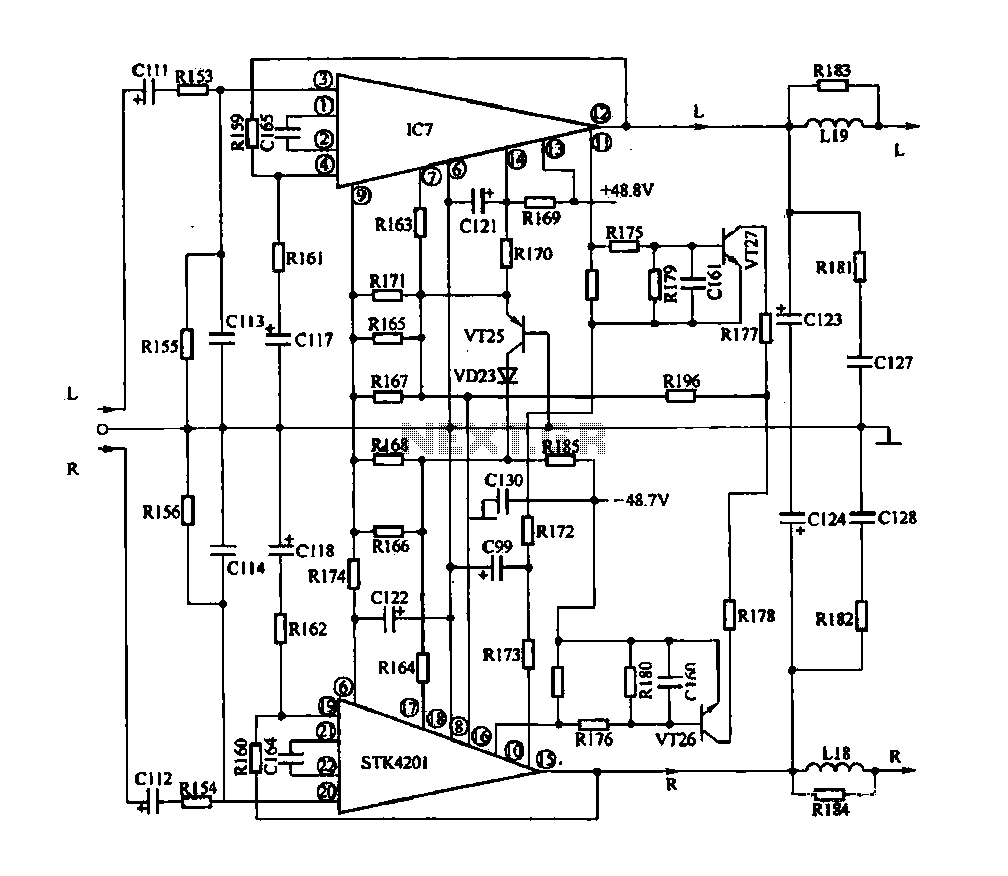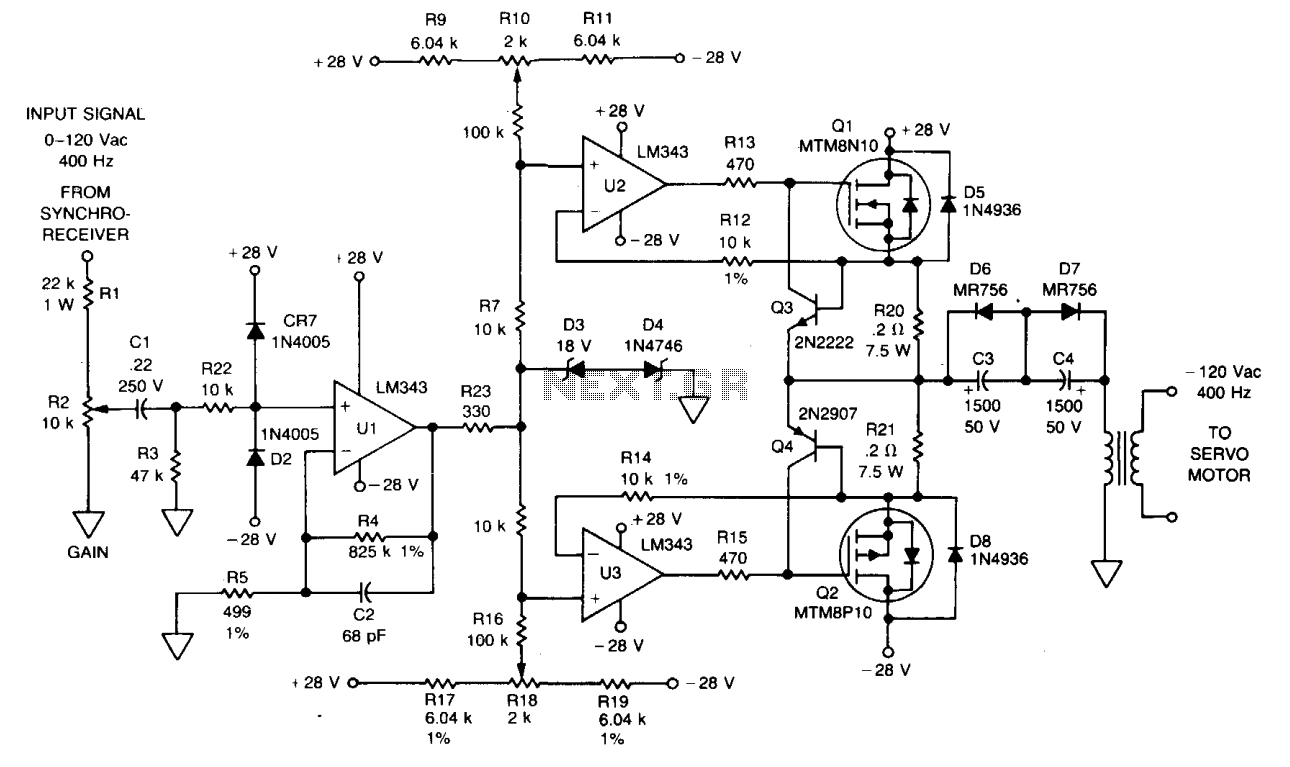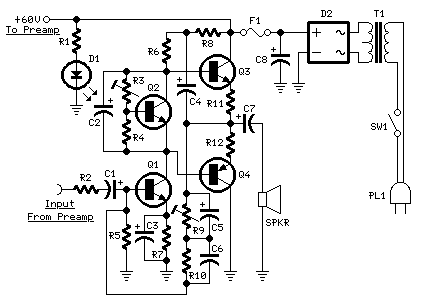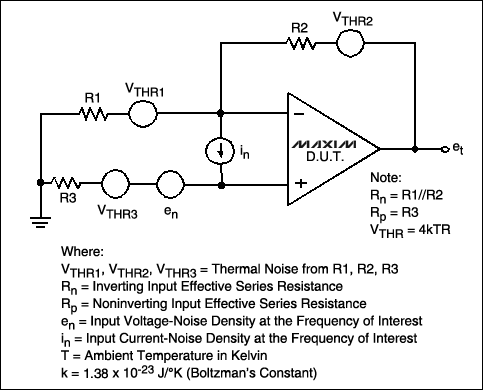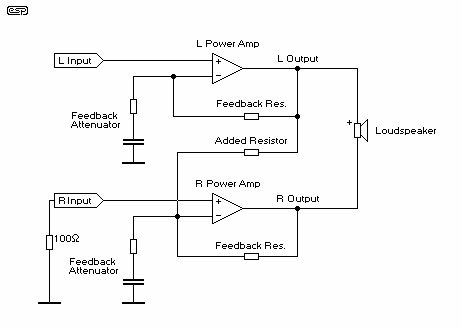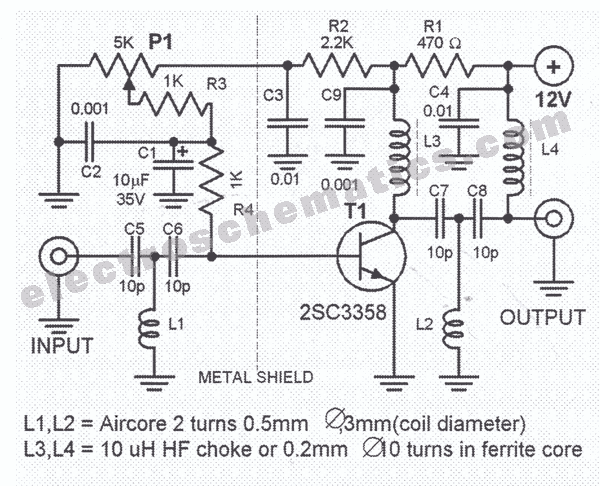
Agc System For Ca3028 If Amplifier
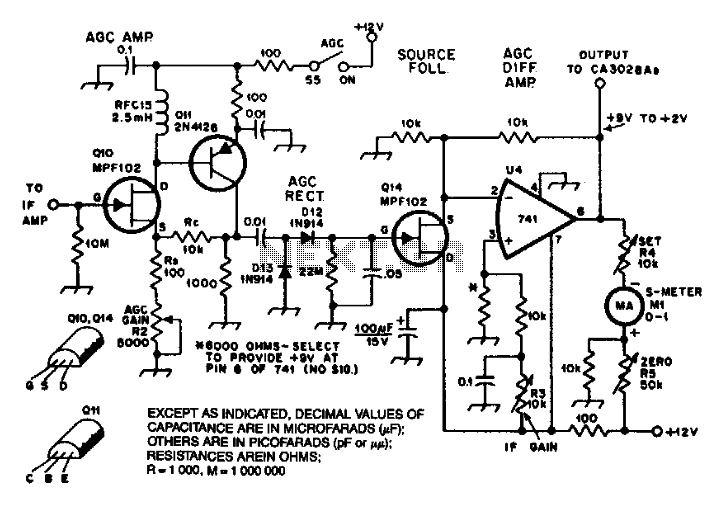
An MPF102 amplifier supplies intermediate frequency (IF) signals to a 2N4126 transistor. A potentiometer in the source of the MPF102 functions as a gain control. The voltage from this configuration is rectified by an 1N914 doubling detector and subsequently drives a 741 operational amplifier through a source follower (Q14). S-meter and IF-gain controls are included in the design.
The circuit operates by utilizing the MPF102, a JFET amplifier, which is configured to amplify the incoming IF signals. The gain control is implemented using a potentiometer connected to the source terminal of the MPF102, allowing for adjustable amplification levels based on the requirements of the application.
The output of the MPF102 is fed into a 2N4126 transistor, which functions as a further amplification stage or as a buffer, depending on the circuit configuration. This transistor is capable of handling higher power levels and can effectively drive subsequent stages or loads.
The rectification of the amplified signal is performed by an 1N914 diode configured as a doubling detector. This diode is known for its fast switching speed and is suitable for high-frequency applications. The output from the rectifier is a DC voltage that represents the amplitude of the IF signal, which is then used to control other components in the circuit.
The rectified voltage is connected to a source follower stage, implemented with a transistor labeled Q14. This source follower configuration allows for impedance matching, ensuring that the output can drive the input of the 741 operational amplifier without significant signal loss. The 741 op-amp is utilized for further signal processing, providing additional gain or filtering as required by the application.
Additionally, the circuit includes S-meter and IF-gain controls. The S-meter provides a visual indication of signal strength, allowing the user to monitor the performance of the amplifier and the overall system. The IF-gain control allows for fine-tuning of the gain settings, enhancing the versatility of the circuit in different operational environments. Overall, the described configuration integrates multiple components to achieve effective signal amplification and processing for intermediate frequency applications. An MPF102 amplifier feeds IF signals to a 2N4126. A potentiometer in the MPF102 source acts as a gain co ntrol. This voltage is rectified by an 1N914 doubling detector, and drives a 741 op amp via a source follower (Q14). S-meter and IF-gain controls are provided. 🔗 External reference
The circuit operates by utilizing the MPF102, a JFET amplifier, which is configured to amplify the incoming IF signals. The gain control is implemented using a potentiometer connected to the source terminal of the MPF102, allowing for adjustable amplification levels based on the requirements of the application.
The output of the MPF102 is fed into a 2N4126 transistor, which functions as a further amplification stage or as a buffer, depending on the circuit configuration. This transistor is capable of handling higher power levels and can effectively drive subsequent stages or loads.
The rectification of the amplified signal is performed by an 1N914 diode configured as a doubling detector. This diode is known for its fast switching speed and is suitable for high-frequency applications. The output from the rectifier is a DC voltage that represents the amplitude of the IF signal, which is then used to control other components in the circuit.
The rectified voltage is connected to a source follower stage, implemented with a transistor labeled Q14. This source follower configuration allows for impedance matching, ensuring that the output can drive the input of the 741 operational amplifier without significant signal loss. The 741 op-amp is utilized for further signal processing, providing additional gain or filtering as required by the application.
Additionally, the circuit includes S-meter and IF-gain controls. The S-meter provides a visual indication of signal strength, allowing the user to monitor the performance of the amplifier and the overall system. The IF-gain control allows for fine-tuning of the gain settings, enhancing the versatility of the circuit in different operational environments. Overall, the described configuration integrates multiple components to achieve effective signal amplification and processing for intermediate frequency applications. An MPF102 amplifier feeds IF signals to a 2N4126. A potentiometer in the MPF102 source acts as a gain co ntrol. This voltage is rectified by an 1N914 doubling detector, and drives a 741 op amp via a source follower (Q14). S-meter and IF-gain controls are provided. 🔗 External reference
